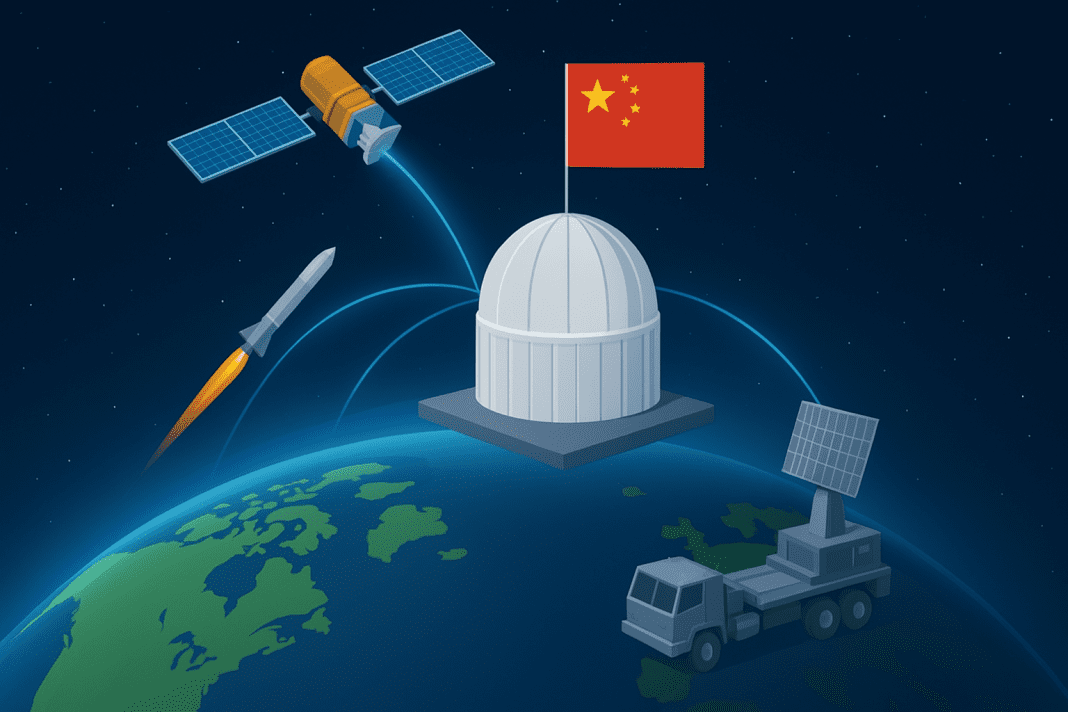China has unveiled a working prototype of a global missile defense system, marking a significant technological step in defense capabilities. Observers say this system mirrors the ambitions of the United States’ proposed Golden Dome initiative. Reports identify the Chinese system as the “distributed early warning detection big data platform.”
China Tests World-First Global Missile Defense System
Scientists involved in the project described it as a breakthrough in handling large-scale data for global threat monitoring. The platform can track up to a thousand missiles simultaneously, no matter where attackers launch them in the world.
The global missile defense system combines multiple types of sensors in space, at sea, in the air, and on land. This integration enables it to identify missile threats in real time. The system can quickly determine important details such as the flight path, the missile type, and whether it is a real warhead or a decoy. Interception systems can then use this information to respond with precision.
The project team emphasized that the global missile defense system processes massive volumes of data at high speeds. It can operate across military networks even when interference disrupts them or bandwidth is limited. This feature ensures that the system remains functional under challenging conditions.
U.S. port fee countdown jolts global shipping — China-built vessels already rerouted
Experts highlight that this deployment is the first known global missile defense system with the potential to achieve coverage across the entire planet.
How the System Works and Its Capabilities
The Chinese global missile defense system relies on advanced technology to monitor threats worldwide. By linking sensors from various military platforms, the system can combine information in one central hub. This allows real-time analysis of missile launches anywhere on Earth.
The sensors include satellites in orbit, radars on land, ships at sea, and aerial detection units. The data collected from these different sources are cross-checked to provide accurate threat information. This helps in distinguishing real missiles from decoys, which can prevent unnecessary reactions and strengthen defense effectiveness.
Huawei crackdown deepens as US closes sanctions loophole fueling China tech fears
The system’s ability to process large amounts of data securely and quickly is described as a major improvement over previous defense platforms. Even under electronic interference or partial network outages, the global missile defense system can continue functioning, ensuring uninterrupted monitoring and analysis.
By achieving global coverage, this platform represents a new era of missile defense. No other known system currently has the ability to simultaneously track threats worldwide with such precision and speed.
Comparison with the US Golden Dome Global Missile Defense System
The United States has also been working on a comparable missile defense concept called the Golden Dome global missile defense system. Proposed earlier this year, the Golden Dome aims to overcome geographical limits and create a system capable of global threat monitoring and interception.
Plans for the US system include a combination of space-based intercept layers and multiple land-based layers. One layer will feature five launch sites to intercept missiles in space. Three of these sites are to be located in the continental United States, with additional sites in Hawaii and Alaska.
The US system also plans to enhance the Ground-Based Midcourse Defense system, which currently uses land-based interceptors in California and Alaska. This will form the second layer of the Golden Dome shield.
A fourth layer, called Limited Area Defense, is designed to protect key population centers. This layer is expected to include new radar installations and launchers compatible with current and future interceptors. It may also integrate existing missile defense systems, such as the Patriot missile.
Both China’s and the US Golden Dome initiative rely on combining multiple layers of sensors and interceptors to provide comprehensive missile defense. While the Chinese system is in the prototype phase, reports suggest it already demonstrates global tracking capabilities and high-speed data processing.

